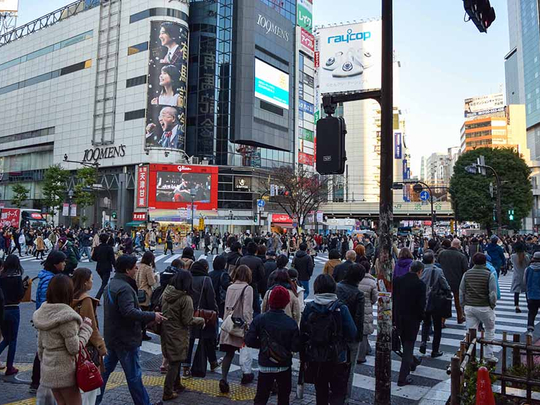
Shinzō Abe’s re-election in October was a clear indication that economic conditions are improving for Japanese people — or at least, that it is his hand they trust to ride out any upcoming storms.
Overall, Abenomics, the prime minister’s brand of economic policy, seems to be working for the Land of the Rising Sun. The economy appears set to continue growing for a third consecutive year through to the end of 2018 and business confidence is on the rise across all sectors regardless of geopolitical concerns.
Growth forecast
Last month, the World Bank forecast that Japan’s economy will continue to expand at the rate of 1.3 per cent in 2018. The figure is a slight reduction from 1.7 per cent growth in 2017, as export growth stabilises and fiscal stimuli are withdrawn.
The government projects GDP growth of 1.8 per cent this year.
Analysts say GDP has continued to expand. The last quarter of 2017 is expected to post growth of 0.9 per cent on the back of strong exports and robust domestic demand, according to a Reuters poll ahead of official results later this month. That would be the longest streak of growth since a 12-quarter stretch of growth between April-June 1986 and January-March 1989, around the peak of Japan’s notorious economic bubble.
“The economy is forecast to improve thanks to both domestic and foreign demand on the back of the recovering global economy,” Yusuke Ichikawa, Senior Economist at Mizuho Research Institute, told Reuters. “But we need to be vigilant about financial market fluctuations, a slowdown in China’s economy and geopolitical risk from North Korea.”
Confidence is soaring across the economy. For the fifth consecutive quarter, large manufacturers said business sentiment continued to improve, according to Bank of Japan’s December Tankan survey, with the index at +25, up from +22 in the previous round. For SMEs, the confidence index reached +15, the highest recorded since 1991.
Vigilance required
However, there is reason for economists to keep a cautionary approach looking ahead. Labour market conditions will continue constricting. Employment is projected to peak in 2018 as the decline in the working-age population accelerates. The debt burden also remains high. Government debt poses a serious risk, having crossed 220 per cent of GDP, the highest recorded in the OECD area.
In fact, Abe himself believes the country has yet to firmly see off the spectre of two decades of deflation. Although analysts say the government could be in a position to declare that the economy has made a sustained exit from deflation before it implements a scheduled sales tax hike in October 2019, the prime minister told parliament last month it would be premature to do so in spite of the strengthening economy.
“A positive economic cycle is kicking off,” Abe said. “An end to deflation means prices aren’t falling consistently and there is assurance Japan won’t slip back into deflation in the future. We need to look at developments more.” Beyond quantitative easing, government policies will ultimately determine whether the economy holds up. Key among the many initiatives rolled out by the government is the Society 5.0 programme, or the Fifth Science and Technology Basic Plan. Launched in 2016, the cabinet policy envisions harnessing new technologies such as artificial intelligence, autonomous vehicles, big data, wearable health devices and robots in a “merging of cyberspace and physical space to offer residents lives full of comfort and vitality”.
An expected economic boost is also seen from the 2020 Tokyo Olympic Games, where associated infrastructure spending to accommodate growth in tourism is likely to compensate for some of the coming downsides, growing GDP by 1 per cent in that year.







